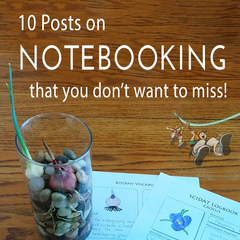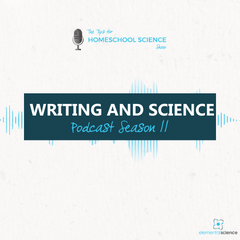There is a meme going around about the different divisions of science. It is a play on words that highlights a true, but humorous aspect of subjects like biology and chemistry. I laughed all the way through it!
About earth science, it says:
“If it has faults, it’s geology.”
Doesn’t that just sum up what we think about when it comes to earth science?
Often, earth science is looked on as the lesser science when compared to the giants of biology, chemistry, and physics. However, it is very important for our students to understand and appreciate the Earth we live on.
Earth science is the branch that includes subjects like geology, meteorology, oceanography, cartography, ecology, and more. Basically, this branch of science looks and studies the physical aspects of our planet.
This month, I wanted to share a brief picture of how you can teach the principles of earth science to the students in your homeschool, co-op, or school. You can use these ideas to help you create or choose a homeschool science curriculum.
Teaching Earth Science at Home
Earth Science with Preschoolers
Earth Science is a great subject to tackle in preschool! Kids love finding rocks, recording the weather, and digging in the dirt!
You can introduce basic principles through hands-on demonstrations. You can teach a simple earth science unit that covers topics like:
- Dirt
- Rocks
- Volcanoes
- Weather
- Clouds
- Air
- Seasons
- Compasses
You can use simple activities, such as rock collecting, observing the clouds, and making a season’s book, to show these concepts in action. You can also have the students memorize a simple sentence that explains the concept in a language they can relate to.
Earth science with a preschooler will be short, sweet, and loads of science fun!
Earth Science with Elementary Students
Earth Science during the elementary years will be very hands-on and slightly project-driven.
You can explore the principles of earth science through hands-on demonstrations and projects that display the concepts in action. You can also read more about these principles in age-appropriate encyclopedias or living books.
You can spend three to four weeks cover topics like:
- The Water Cycle
- Biomes
- Thunderstorms, Tornadoes, and Hurricanes
- Volcanoes
- Types of Rocks
- Fossils
- Day and Night
- Seasons
- Mountains
- Rivers and Oceans
- Caves
- Taking care of Earth
As part of earth science, you and your student can enjoy seeing the water cycle happen in a bag, making impression fossils, forming your own stalagmites and stalactites, and learning about the oceans that cover a good part of the surface of the earth. They will learn a ton as the see the physical aspects of our planet on display in front of them.
Earth Science with an elementary student will explore the principles in a practical hands-on way.
Earth Science with middle school students
Middle school students can dig deeper into the principles of earth science they saw during the elementary years and add on a few more.
You can teach your student to play with the principles of earth science through inquiry-based experiments. You can also have them read and write about what they have learned.
In your students, you can cover concepts like:
- Reading Maps
- Latitude and Longitude
- Layers of the Earth
- Continents
- Composition of soil
- Weathering and Erosion
- Types of Volcanoes
- Earthquakes
- How rocks form
- Atmosphere
- Weather Forecasting
- Types of Clouds
- Major Oceans and Seas
The students can learn what causes an earthquake to occur, what the different types of clouds can tell you about the weather, how to read maps, and what causes weathering and erosion.
Earth science with a middle school student will reinforce the principles through inquiry-based methods.
Earth Science with high school students
If you have taught earth science at home throughout the elementary and middle school years, your students will have a good grasp of the physical aspects of our planet.
Now, they can pick up that textbook and tackle the more abstract principles and use those challenging formulas without getting bogged down by the basics.
Wrapping it Up
If you teach earth science from the beginning, your student will be prepared and maybe even a little bit excited to learn about this subject when they reach high school!
Need some help teaching earth science at home?
Check out our Earth Science & Astronomy Pinterest Board for ideas for activities:
Follow Elemental Science 's board Earth Science & Astronomy Science Projects on Pinterest.
Or check out the following Elemental Science programs with easy-to-use plans for teaching earth science:
- For Preschool – Intro to Science or Summer's Lab
- For Elementary Students –Earth Science & Astronomy for the Grammar Stage or Earth Science Lapbooks or The Sassafras Science Adventures (Earth Science, Geology, and Astronomy)
- For Middle School Students – Earth Science & Astronomy for the Logic Stage
- For High School Students – Earth Science for High School (Coming Soon!)
Don't miss the other posts in this series:
Over the last year, we have been sharing tips and ideas for teaching the various disciplines of science at home. Here's a look at the complete series:


